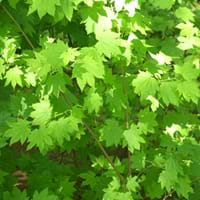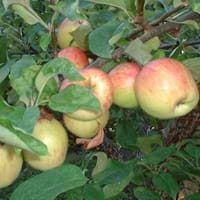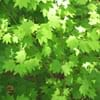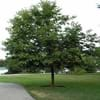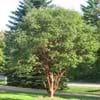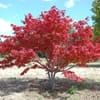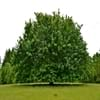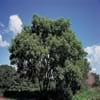What is
Life Span
Perennial
Perennial
Type
Tree
Fruit
Origin
North America, Northwestern United States
Eastern Europe, Southern Europe, Russia/Siberia, Southern Asia, Western Asia
Types
Not Available
Not avaialable
Habitat
Forests, gardens, Open Forest, Tropical regions, Wet forest
Hillside, Mountain Slopes, Temperate Regions
USDA Hardiness Zone
5-9
2-8
AHS Heat Zone
9-4
8-1
Sunset Zone
A3, 2b, 3a, 3b, 4, 5, 6, 14, 15, 16, 17
Not Available
Habit
Clump-Forming
Spreading
Information
Plant Size
Minimum Height
610.00 cm
99+
610.00 cm
99+
Minimum Width
610.00 cm
34
610.00 cm
34
Plant Color
Flower Color
White, Purple
White, Light Pink
Flower Color Modifier
Bicolor
Bicolor
Fruit Color
Red
Red, Light Yellow
Leaf Color in Spring
Green, Light Green
Green
Leaf Color in Summer
Green, Light Green
Green
Leaf Color in Fall
Red, Orange, Dark Red, Orange Red
Green, Light Yellow, Brown
Leaf Color in Winter
Not Available
Light Green
Shape
Leaf Shape
Maple shaped
Oblong
Thorns
No
No
Season
Plant Season
Spring, Summer, Fall, Winter
Spring, Fall
Growing Conditions
Sunlight
Full Sun, Partial Sun, Partial shade, Full Shade
Full Sun, Partial Sun, Partial shade
Growth Rate
Medium
Medium
Type of Soil
Clay, Loam, Sand
Loam, Sand
The pH of Soil
Acidic, Neutral, Alkaline
Acidic, Neutral
Soil Drainage
Average
Well drained
Bloom Time
Early Spring
Early Spring, Spring
Repeat Bloomer
No
No
Tolerances
Wet Site
Drought
Care
Where to Plant?
Ground
Ground
How to Plant?
Stem Planting
Grafting, Seedlings, Transplanting
Plant Maintenance
Medium
Medium
Watering Plants
Watering Requirements
Allow soil to be completely dry in between waterings, Requires consistently moist soil, Requires watering in the growing season, Water Deeply
Medium
In Summer
Lots of watering
Lots of watering
In Spring
Moderate
Moderate
In Winter
Average Water
Average Water
Soil
Soil pH
Acidic, Neutral, Alkaline
Acidic, Neutral
Soil Type
Clay, Loam, Sand
Loam, Sand
Soil Drainage Capacity
Average
Well drained
Sun Exposure
Full Sun, Partial Sun, Partial shade, Full Shade
Full Sun, Partial Sun, Partial shade
Pruning
Pinch or prune as they grow to promote branching and bushiness, Prune every year, Prune for shortening long shoots, Prune if you want to improve plant shape, Remove deadheads
Remove damaged leaves, Remove dead branches, Remove dead leaves
Fertilizers
All-Purpose Liquid Fertilizer
All-Purpose Liquid Fertilizer
Pests and Diseases
Billbugs, Fungal Diseases, Red blotch
Black rot, Leaf spot, Scab
Plant Tolerance
Drought
Drought
Facts
Flowers
Showy
Showy
Flower Petal Number
Single
Single
Fruits
Showy Fruit
Yes
Yes
Edible Fruit
No
Yes
Fragrance
Fragrant Flower
No
Yes
Fragrant Fruit
No
No
Fragrant Leaf
Yes
No
Fragrant Bark/Stem
No
No
Showy Foliage
Yes
No
Showy Bark
No
No
Foliage Texture
Medium
Medium
Foliage Sheen
Matte
Matte
Evergreen
No
No
Invasive
No
No
Self-Sowing
Yes
Yes
Attracts
Not Available
Birds, Not Available
Allergy
no allergic reactions
Mouth itching, Throat itching
Benefits
Uses
Aesthetic Uses
Showy Purposes
Not Used For Aesthetic Purpose
Beauty Benefits
Not Available
Not Available
Edible Uses
No
Yes
Environmental Uses
Air purification
Air purification
Plant Benefits
Medicinal Uses
No Medicinal Use
Cancer, constipation, Diabetes, Diarrhea, Dysentry, Fever, Heart problems, Tooth ache
Part of Plant Used
Not Available
Fruits
Other Uses
Not Available
Used As Food, Wood is used for making furniture
Used As Indoor Plant
No
No
Used As Outdoor Plant
Yes
Yes
Garden Design
Feature Plant, Foundation, Mixed Border, Topiary / Bonsai / Espalier
Edible, Fruit / Fruit Tree
Scientific Name
Botanical Name
ACER circinatum
Malus domestica Wolf River
Common Name
Oregon Vine Maple, Vine Maple
Apple, Cider Apple, Cooking Apple, Wolf River Apple
In Hindi
बेल मेपल
Wolf River Apple
In German
Wein-Ahorn
Wolf River Apple
In French
Maple Vine
Wolf River Apple
In Spanish
arce vid
Wolf River Apple
In Greek
αμπέλου Maple
Wolf River Apple
In Portuguese
bordo de videira
Wolf River Apple
In Polish
Vine Maple
Wolf River Apple
In Latin
vitis Maple
Wolf River Apple
Classification
Kingdom
Plantae
Plantae
Phylum
Tracheophyta
Magnoliophyta
Class
Magnoliopsida
Magnoliopsida
Order
Sapindales
Rosales
Family
Aceraceae
Rosaceae
Genus
Acer
Malus
Clade
Angiosperms, Eudicots, Rosids
Angiosperms, Eudicots, Rosids
Tribe
Not Available
Not Available
Subfamily
Hippocastanoideae
Not Available
Number of Species
Not Available
7500
4
|
||
|
||
|
